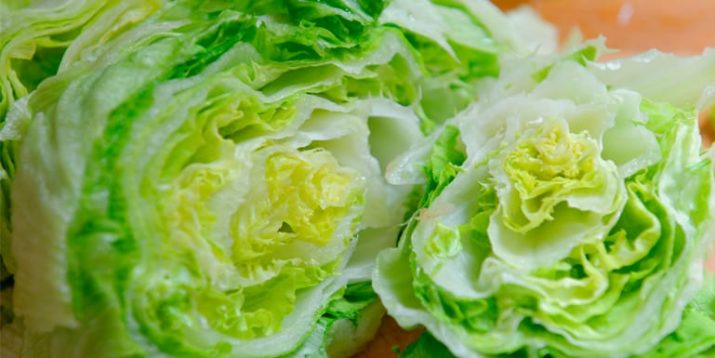Does Iceberg Lettuce Have Any Nutritional Value?

Iceberg lettuce is the statement necklace of vegetables.
Let us explain.
The crisp lettuce we put on everything from hamburgers to tacos is definitely a staple in many refrigerators. We like accessorizing our foods with it, but does it actually add anything to our diet?
Yes and no. Iceberg lettuce provides a satisfying crunchiness to salads and sandwiches, but it shouldn’t be the only green in your diet — much like your statement necklace isn’t the only thing in your wardrobe — that’s because iceberg lettuce isn’t one of the most nutrient-dense salad greens. But it can have a place in a balanced diet.
“Poor iceberg lettuce has been villainized in the recent past, passed by for having no nutritional value,” says Ann Marion Willis, an R.D. based in Nova Scotia, Canada. “While it might never be considered the next ‘superfood,’ it still provides a variety of nutrients, albeit in small amounts.”
Per 100 grams, which is equivalent to just over two cups of chopped greens, iceberg lettuce contributes 1 gram of fiber, 24mg of vitamin K, 141 mg of potassium, and 0.41 mg of iron.
How to Pick a Healthy Lettuce
So, what’s the better choice when it comes to leafy veggies? Go darker. Spinach and arugula, for example, are not exactly exciting, but necessary for your “outfit” or, in this case, a healthy diet.
“To get more bang for your buck, try darker-colored lettuces and greens,” says Willis. “Spinach and kale offer more fiber, potassium, iron, calcium, manganese, vitamin K, beta-carotene, lutein, and folate than iceberg lettuce.”
To compare, 100 grams of spinach has 2 grams of fiber, 483 mcg of vitamin K, 558 mg of potassium and 3 mg of iron, while 100 grams of kale boasts 2 grams of fiber, 705 mcg of vitamin K, 491 mg of potassium, and 1 mg of iron.
“Each leafy green has a slightly different balance of nutrients, so your best bet is to consume a variety, both in raw and cooked dishes,” advises Willis. “If you’re adventurous, try experimenting with new-to-you options including arugula, Swiss chard, endive, radicchio, or collard greens.” Raw greens can be blended into your smoothies for an easy nutrient boost, or mixed together in salads to give your taste buds a spicy and tangy change of pace.
Why the Argument Against Iceberg Lettuce Is Bogus
The most common argument against iceberg lettuce is that it’s comprised mostly of water. That’s true — about 95 percent of it is water, according to the USDA — but that’s true of other types of green leaves, including spinach.
But, consuming water-rich greens can help you take in enough fluids during the day, in addition to providing a small amount of other nutrients.
So, go ahead and eat that iceberg lettuce with dinner — just don’t make it the only green in your rotation. “Overall, include leafy greens at least one to two times per day, and choose a variety of options to ensure you’re meeting your nutrient needs,” says Willis.
